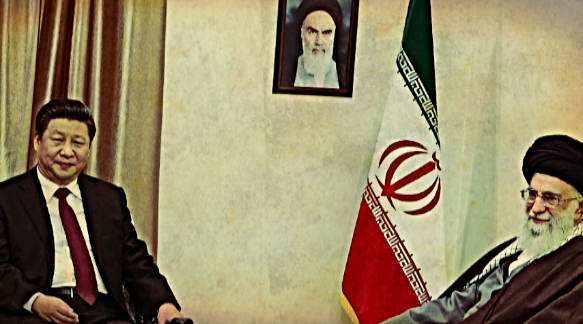It's Shavu'ot time, and that means more alarmist talk of a conversion crisis in Israel. Elli Fischer explains why that's nonsense.
Every year when Shavu'ot comes around, religious Jews raise the alarm of a "conversion crisis" in Israel • Per them, a failure to act immediately will lead to the elimination of non-halachic Jewry through assimilation • But a look at the actual numbers shows that the reverse is happening, even with the problems with the Rabbinic bureaucracy • A plea for non-alarmist thinking

The holiday of Shavuot is associated with several venerable Jewish customs: eating dairy products, decorating synagogues with flowers, and studying Torah all night. A new custom can be added to this list—criticizing Israeli government policy on religious conversion. In accordance with this custom, one reads a report or article demonstrating how problematic the current policy is, expresses concern that if the problem is not addressed soon, there will no longer be a Jewish majority here in another few years, and states, with great fervor: “Had Ruth the Moabite come to the Chief Rabbinate, they would not have converted her.”
Ahead of Shavuot, 2015, the Israel Democracy Institute did not disappoint when they released the abstract of a study by Dr. Netanel Fisher (no relation), an abstract cited in several Israeli media outlets. In describing the “crisis” that his study attempts to address, Fisher writes:
The conversion situation in Israel is unacceptable: after twenty years of state-run conversion, the number of converts from the Former Soviet Union is low… under these conditions, intermarriage rates in Israel are approaching 10%, a fact that endangers Jewish solidarity and the Jewish character of the state.
As I wrote in my previous article on state conversion, there is a widespread assumption that unless the conversion rate among immigrants from the FSU rises, there will be an increase in intermarriage and assimilation. This assumption underlies the statements of many liberal Orthodox organizations, such as Beit Hillel, ITIM, Tzohar, and others, and it even appears in the official explanation for various proposed laws to govern matters of conversions.
The Non-Crisis

A look at the remainder of the abstract and various other publications shows that they deal mainly with two questions: Why are conversion rates so low? And how can we raise them and effect a mass conversion amongst immigrants from the FSU?
However, closer scrutiny of reality shows that the entire approach is unfounded since there is no “crisis” in the first place. The presence of non-Jews in Israel does not endanger its Jewish character. We may ask why there are not more converts, and it is certainly worthwhile to suggest ways to encourage conversion. No doubt we should be considering alternatives to the present situation, in which the process of conversion, a highly personal process that ought to be individuated and attuned to the convert’s needs, is a soulless encounter with bureaucracy.
Yet we should not mistakenly think that there is an emergency. The problem is already shrinking, and, given a few generations, will solve itself. Moreover, the data are so clear and simple that one would be justified in asking to what extent these organizations simply do not understand basic math and to what extent they are in fact well acquainted with reality but take an alarmist approach in order to advance their religious and/or political agendas.
Let us set out the cold, hard facts. Each year, before Rosh Hashana, Israel’s Central Bureau of Statistics releases “A Selection of Data from Israel’s Statistical Yearbook.” Each November, the CBS publishes “A Collection of Data for Universal Children’s Day.” In both of these publications, the very first item is a segmentation of the general population of the State of Israel—the entire population in the Rosh Hashana report and the population of children on Universal Children’s Day. The most recent publications report on conditions at the end of 2013. These are the most official and up-to-date data available in Israel.
According to these data, the number of “Others” (that is, citizens who are not “Jewish” and not “Arab”; the vast majority of this segment of the population are non-Jewish immigrants from the FSU and their descendants) is decreasing significantly as a proportion of the Jewish population and, it goes without saying, as a proportion of the overall population. This can be illustrated with the following chart:
| The Population of “Others” as part of the Population of “Jews and Others” in Israel at the end of 2013, Segmented by Age(All data are from Israel’s Central Bureau of statistics) | ||||
| Jews & Others | Amongst them Jews | Amongst them Others | Others as a % of the total population of Jews & Others | |
| Age 18 and up | 4,476,000 | 4,209,000 | 267,000 | 5.97% |
| Total population | 6,451,000 | 6,104,000 | 347,000 | 5.38% |
| Age 0-17 | 1,975,000 | 1,895,000 | 80,000 | 4.05% |
Stated simply, whereas 6% of adults in Israeli-Jewish society are not halakhically Jewish, only 4% of children in the same society are not halakhically Jewish.
There are several reasons for this phenomenon. Firstly, the emigration rate is higher among immigrants from the FSU. Secondly, the birth rate among this segment of the population is lower than that of other segments.
The most important reason, however, is conversion itself. According to the IDI abstract, about 1,800 immigrants from the FSU convert annually in Israel. That is not a lot. But the important question is not “How many convert?” rather “Who are the converts?” The various organizations raise the alarm by relating only to the first question, while ignoring the second, more important question.
Who, then, are the converts? The overwhelming majority of them are women between the ages of 18 and 30. As is well known, according to halacha the mother determines the status of the child. A Jew is someone born to a Jewish mother.
It stands to reason that a similar scenario plays out in many Jewish homes in Israel. When a daughter comes home with her beau and he turns out to be a non-Jew, perhaps the family is not pleased, and they may even encourage him to convert. They may even become frustrated when some rabbi insists that the groom must accept Orthodox observance in order to convert, even if he already identifies as a Jew, speaks Hebrew, served in the IDF, etc. Ultimately, though, the family knows that the grandchildren will be Jewish. Therefore, if the couple must fly to Cyprus or the Czech Republic in order to wed civilly, or if they opt for a common law marriage, it is not so terrible. The grandchildren will be Jewish.
However, if a son comes home with a non-Jewish woman, and suddenly there is concern that the grandchildren will not be Jewish, the parents will be adamant that the woman convert. They want Jewish grandchildren, of course. Moreover, once the conversion process begins, they may discover that the rabbis on the conversion court also want this couple to have Jewish children, and many of the obstacles faced by other potential converts will not be faced by women of child-bearing age—because the next generation is of paramount importance.
This is how we end up with a situation in which the number of non-Jewish, non-Arab “Others” in Israel slowly shrinks. In essence, this is a natural process of assimilation: in a country with a Jewish majority, the “others” assimilate into the Jewish population, and not the other way around. It turns out that fear of assimilation is a habit inherited from the Diaspora, the remnant of a mentality that we developed as a minority. Today, in the State of Israel, there is nothing to fear.
It seems that the natural response of many Israeli families contains a great deal of wisdom, and there is no need for experiments in social engineering to treat a nonexistent problem. As the Jewish sages said: “Leave the Jews alone; if they are not prophets, they are the children of prophets.”
To receive updates on new articles in English, join Mida on Facebook or Twitter or join our mailing list.




